We have been doing work at a particular radio station for a few years now. Every time I go there, I look at this… thing:
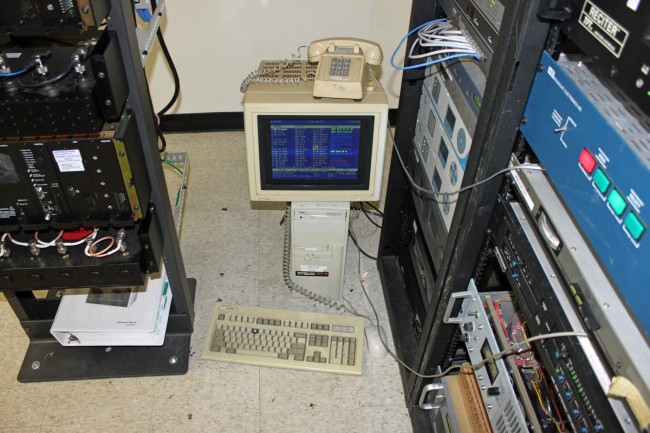
It is a very old PC running Windows 98 and Burk Autopilot/CDL 4.6 for DOS. The autopilot program is running from a windows DOS prompt and seems to be working okay; my concern is about the age of the hardware and the potential for failure. The Autopilot is what controls the AM station’s power levels, which vary from 1,000 watts daytime to 4 watts nighttime. We have all read about AM stations fined by the FCC for running daytime power levels at night. Failure of the ancient autopilot computer could lead to exactly this scenario.
I attempted to purchase the newer, Windows XP version of Autopilot, only to be told “that item is not in this year’s budget.” Apparently, it was not in the budget for the following year or the one after that. Thus, when the hard drive on the old Windoze 98 machine began making a terrible grinding noise, I knew the end was near. I made an attempt to run the Autopilot from a Windows XP DOS prompt, at which time I was informed: “The program cannot start or run due to incompatibility with 64-bit versions of windows…” GAK! I kind of knew this already.
I began daydreaming about running a DOS virtual machine inside of a Ubuntu or Lubuntu operating system. Then I found a DOS emulator program for Linux called “DOSemu” which looked like exactly what the doctor ordered. Using the carcasses of several old HP desktop computers, I came up with one working PC that had two organic serial ports. This is actually not a bad unit, as it has a 1.6 GHz dual-core processor and 2 GB RAM. On this machine, I loaded the 32-bit version of Ubuntu 12.04 desktop. Naturally, the original Autopilot/CDL 4.6 disks were nowhere to be found so I had to copy the directory off of the old computer. It was also understood that this project was simply going to suck. Therefore, the superannuated Windoze 98 machine had no network interface or any USB ports. My only option was to copy the files onto a 3 1/2-inch floppy disk. Fortunately, I have a USB 3 1/2 floppy drive, which I was able to use to copy the files onto the new computer into the /home/ARC16 directory.
Downloading and setting up Dosemu was fairly straightforward. There were a few configuration steps that needed to be completed before the Autopilot software would work and communicate with the ARC-16 remote control:
- In the DOSemu configuration file, the hardware serial port needs to be configured to work with the DOS emulator. This is located at /etc/dosemu/doseum.conf. The default conf file has all of the serial ports commented out. Remove the comment and change the serial port source: $_com1 = “/dev/ttyS0” or $_com2 = “/dev/ttyS1” The serial ports available can be determined by the following terminal command: dmesg | grep tty The output should look something like this:
paul@engineeringIII:~$ dmesg | grep tty
[ 0.000000] console [tty0] enabled
[ 37.531286] serial8250: ttyS0 at I/O 0x3f8 (irq = 4) is a 16550A
[ 37.532138] 0000:04:00.3: ttyS1 at I/O 0x1020 (irq = 3) is a 16550A
[16206.667112] usb 2-1.3: pl2303 converter now attached to ttyUSB0
paul@engineeringIII:~$For USB to serial port converters, the serial port source may look something like this: $_com1 = “/dev/ttyUSB0”
- The DOS emulator time can be synced to Linux time by: $_timemode = “linux” This is great because Linux can be synced to a NTP source, meaning Autopilot time will always be correct.
- The logged-on user that will be running the DOS emulator needs to be added to the “dialout” group. This can be done by sudo adduser [user name] dialout. This will allow Autopilot software access to the comm port.
- The DOS autoexec.bat file should be edited so that Burk autopilot loads automatically when DOSemu is started. DOSemu automatically assigns the D drive to the Linux home directory. Thus, simply adding:
D:
CD ARC16
ARC16to the end of the autoexec.bat file will start the ARC16 program automatically when the DOSemu program is started.
- DOSemu can then be added to the Ubuntu desktop startup.
The results:
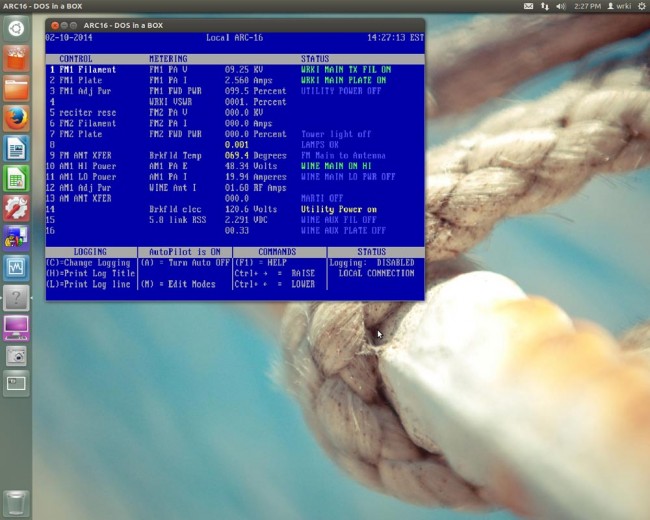
Burk Autopilot/CDL (DOS version) running on a Linux (Ubuntu 12.04.4) machine. The stupid thing will probably run forever now.
This computer is also used to program the satellite receivers, which are located at the transmitter site. Thus, there are several manuals and program clocks stored in the documents folder. I also installed the x11VNC server program, so that the computer desktop can be logged into remotely from the studio over the LAN link.
I noticed that the DOSemu program hits the processor fairly hard, with one core running about 45% most of the time. That should be fine, as this machine is used very infrequently for other tasks.


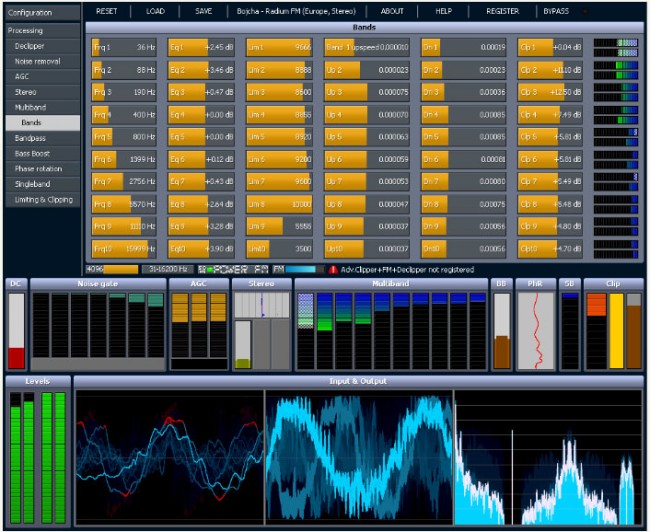
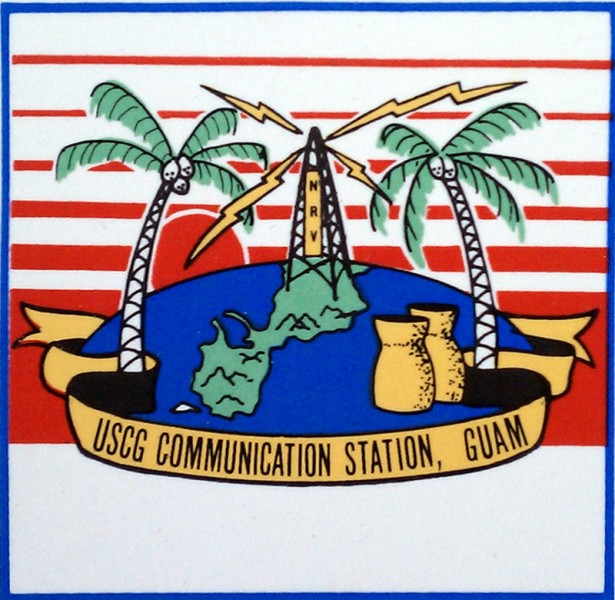

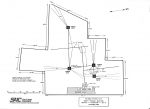
I’d be very tempted to have taken a ‘Ghost’ image of the old Win98 setup before it died. Or just Xcopy32 the entire file structure to another HD. The biggest issue with old machines like that is not so much mainboards but hard drives, which are invariably IDE which is now obsolete. I have a small pile of perfectly good laptops that are mini IDE HDD based and it’s impossible to get new ones and hard to get good used ones. 3.5″ desktop IDE drives are more common. AFAIK, no one makes them anymore. IN a desktop box you could doubtless drop a SATA card in.
DOS apps (16bit) won’t run on anything after XP as the 16 bit subset disappeared after that, so Vista and Win7/8/8.1 won’t run DoS as such. However… you CAN run a Virtual Machine in 7 or 8.x and run DOS on that. Works a treat. Several around and several of them are free.
We’re not worthy.
Paul:
Thanks for posting this. I have an AM directional that is still running DOS Autopilot, which handles pattern change and a few other things. Not long ago I had a very similar situation (old hardware, drive died), but fortunately I had a few working PC carcasses laying about that would run DOS, and I had copies of the AP directories, so I was able to restore everything.
Good to know it can be made to work under Linux and can sync to NTP, because that is one of my biggest gripes with the current setup…having to go to the site frequently and reset the PC clock. DOS Autopilot is old and creaky, but I’ve been able to make it do useful stuff like monitor tower lights and call out if they fail, reliably reset the night phasor if a contactor hangs, etc.
Just curious…how many hours labor did you have in that? As a contract engineer, for the time the station would have paid me to do that, they could have bought a Broadcast Tools Schedule Sentinel for the power level switching and a small web based remote like the WVRC-4 or Circuitwerkes Site Sentry4.
That being said, nice work-around. I still have 12 stations running RDS Phantom DOS on-air automation…most of them with the original hard drives from the early 1990’s. In the back of my mind, I’ve been wondering if I could build a modern box to run this software. The main problem I see is that they were designed to use old ISA slot audio cards…from either Antex or Audioscience…so I’d have to figure that part out.
For old legacy DOS applications, this might be a viable option before long – http://www.raspberrypi.org/archives/6008
@Geoff Roberts: With IDE drives becoming obsolete it’s difficult keeping legacy computers as well as other equipment running. I recently updated several computers, an old series 2 Tivo and a 360 Systems ShortCut and Instant Replay 2 with SATA drives with nothing more than an SATA to IDE bridge board. The expenditure was about $18 per bridge (including shipping) plus the cost of the drives. I used SATA SSD drives in everything but the Tivo and they all operated great.
@Geoff, I thought about ghosting a copy, but then I figured I would be in the same boat all over again in a couple of years, thus I came up with the Linux/DOS solution.
@Allen, no problem, I figure if I am having this problem, somebody else is too. The DOS autopilot does not have a lot of flashy features, but it does get the job done.
@Steve, I have yet to get my hands on a raspberry PI or a Beagle Bone black. I hear they are pretty slick.
@Chris, all totaled, I think I have about 8-9 hours into this. The majority of that was building the computer from available parts laying around. The rest was installing the OS and getting the DOS emulator to work right. As far as cost for a new remote control; I do not know how much a WVRC-4 or Site Sentry costs, but as you can see, we need almost all of the 16 channels on the Burk because there are two stations here. A Sicon 8 is expandable to 16 channels, but they cost well over $1,000. Also, with a new remote control, there would have been several hours labor involved in re-wiring the site. So, in the end, I think the station owners go off lightly, especially when compared to purchasing a new ARC Plus system.
Interesting timing, I’m working on a similar project this week with the DOS version of AutoPilot. Windows 95, failed hard disk, you get the picture.
I do have the /CDL directory backed up, so it’s just a matter of finding suitable hardware and a compatible OS. I hadn’t considered a Linux solution, but this looks sharp.
The IDE sound cards killed a lot of otherwise functional automation systems. I removed a stack of Pristine’s that were tied to Antex IDE cards. When the motherboards dried up, that was it. Now to soon be repeated with PCI cards like AudioScience.
Not long ago I did something similar – I had a DOS based hardware / software setup that I needed to get running on newer hardware and would not work on Windows.
While I’ve worked with Linux quite a bit, I took a different approach to get it running. I drew on my experience with OS/2 Warp (now called and still sold as eComStation) to get the setup running on a more modern computer. Back in the day OS/2 was known for having “better DOS then DOS” support (support which still exists on the latest version), I was able to write a little app that runs in an OS/2 window to push data to the DOS box, allowing me to add network support to software developed in the pre-internet era.
This is why when I look up the the word “engineer” in the dictionary, it just has an arrow pointing towards your picture. Slick, Paul. Very nice.
I’ll only add that ghosting the hard drive wouldn’t really have bought you anything. That ghosted copy would only have worked on the same (or extremely similar) hardware had anything died. New motherboard? You’re hosed. If anything had changed (except, maybe, the hard drive itself, and that’s not absolute), you would still have been up the creek without a paddidle. Been there, done that. Your solution was much better.
I have 3 ARC-16 units hanging around. Does anyone know if the DOS version of Autopilot will work on these machines without a registration key? I skimmed through the manual and it mentions the program must be registered within 30 days. Since Burk does not support this software any longer, I don’t know if I would be able to obtain the registration number/serial key from them as they would want me to pay for the newer software.
Don Mansfield
don@mangoland.org
Don’t you have to use a “slowdown” program to use DOS-based Autopilot, or is that not necessary with Linux?
Glen, just a standard linux installation, no programs or applications needed to slow the processor down.
Hi Paul:
I was wondering how the Autopilot CDL/Ubuntu set-up was working, now two years later from your original post. We’ve inherited a station running CDL on (I think) a Win2k machine.
Thanks.
Russ Hines
JMS & Associates, Inc.
Cincinnati, OH
Hi Russ, two years later and it is still working great. E-mail me if you have any questions on how to set this up
There are alot of used computers out there that will install dos. Find an old computer or even a new one and load DOS onto it, or even better as one of the above users said, just clone the drive and put it into another computer. Most PCs with an IDE interface will run DOS. You might need to find one with a parallel port or serial port. DOS is still used for this purpose, and I know of many stations that use a dos machine for transmitter control and logging.
Sir:
I’m facing the same issue at our station. I was wondering if you had any problems with the Linux / dosemu serial and parallel port emulation. Our very old DOS machines are using parallel printers for the log and serial for the ARC16.
Thank-you
Douglas Fraser
KING-TV
Hi can anyone send me Burk Autopilot/CDL 4.6 for DOS as its nowhere to be found on the internet and I would realy like to have a try with it
BTW: does anyone know of any good Radio Automation software for DOS that I could exeriment with it (for free if posible because I can’t even get anything on google thats for DOS)
Thanks for Anwsering and Best Regards